|
Design Features:
The C-2.2 applied the ACSS is a non-feedback
technology made with fully discrete amplifiers. Most people know the
global
feedback design can offer better specs in test measurements, and
non-feedback can't do well in test measurements but can offer better
sound for the human's ears. Here is a conflict of the classic circuits.
But the ACSS opens a new field, it can offer a least coloration sound
which is more neutral with very low distortion and high linearity. So
it can retain the dynamics, detail and neutral sound but not sound
bright or harsh.
The output buffers are
Non-feedback. For low impedance, we applied a diamond output stage
(the MOSFET and transistor combined the
Cascode
stage )which is quite less colored than most conventional circuits.
ACSS non-feedback amp
ALPS 27 volume pot
Neutrik socket
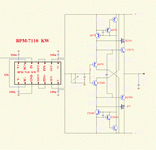
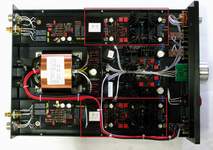

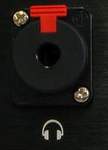
C-2.2 applies the
excellent analog output stages, but these are not the only keys of
the best sound. The power supply is most important. Even applying
the best amp designed , if matched to a normal power supply, the
total sound may still be average or sound musical but can't be
neutral and detailed.
C-2.2 applied
the class A parallel connection PSU for the ACSS analog output stages.
The
class A parallel connection PSU has very high input impedance for avoid pulse through the PSU from affecting the
amp and low
output impedance with very fast speed and high linear , so it is a very clean
power supply. In my experience, its sound is better than battery power
supply, better human sound and neutral.
Class
A power supply.
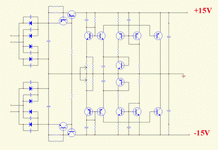
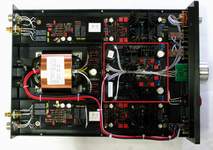
C-2.2 has three pairs of inputs: one set of
ACSS current mode input, and two single-ended RCAs inputs. If the input
signals are coming from RCAs, they are internally converted into
current signals and then amplified. To use the C-2.2 as a preamplifier,
there is one set of RCA output for your power amp connection.
In order to minimize interference and distortion of sound
quality, the left and right channel circuitries are completely
separated.
C-2.2 uses an all aluminum alloy chassis to
prevent the eddy current of the transformer from interfering with the
circuit board.
About volume in ACSS circuits:
The volume control is also different from conventional technology.
Conventional volume control technology is
the volume control implement in the analog amp
input stage through a volume pot to reduce the signal .
The
volume pots quality effect the sound quality direct , the low
quality volume pot cause lost the detail and channels imbalance
cause the soundstage distortion . Even the high
performance volume pot still cause the detail lose. Whatever
quality volume pots, must cause the S/N worst .
But in
the C-2.2 , we applied the I/V conversion volume control ,
the volume control just a
variable passive I/V conversion place at the ACSS amp output ,
where the output is the current signal, not the voltage signal. The
volume control is I/V conversion, and the volume depends on the
current (I) conversion to the voltage (V). (Like R-2R D/A chips
output passive I/V conversion)
It can keep the signal frequency band flat and
not lost any detail.
It can't degrade on sound
quality in every volume level . After the volume , there are
four groups
diamond non-feedback buffer output stages
offer the very low output impedance
Mark Levinson also knows that current volume control has great
benefits, so in their Top End preamp NO.32 volume control, they use
many components to change the signal to current signal (I), then
implement the volume control
, and then change back
to voltage signal (V) again. But C-2.2 is simply a more complete
work in terms of the current signal, and technically, it is superior
to conventional technology.
The less conversion bring much neutral sound .
¡@ |

